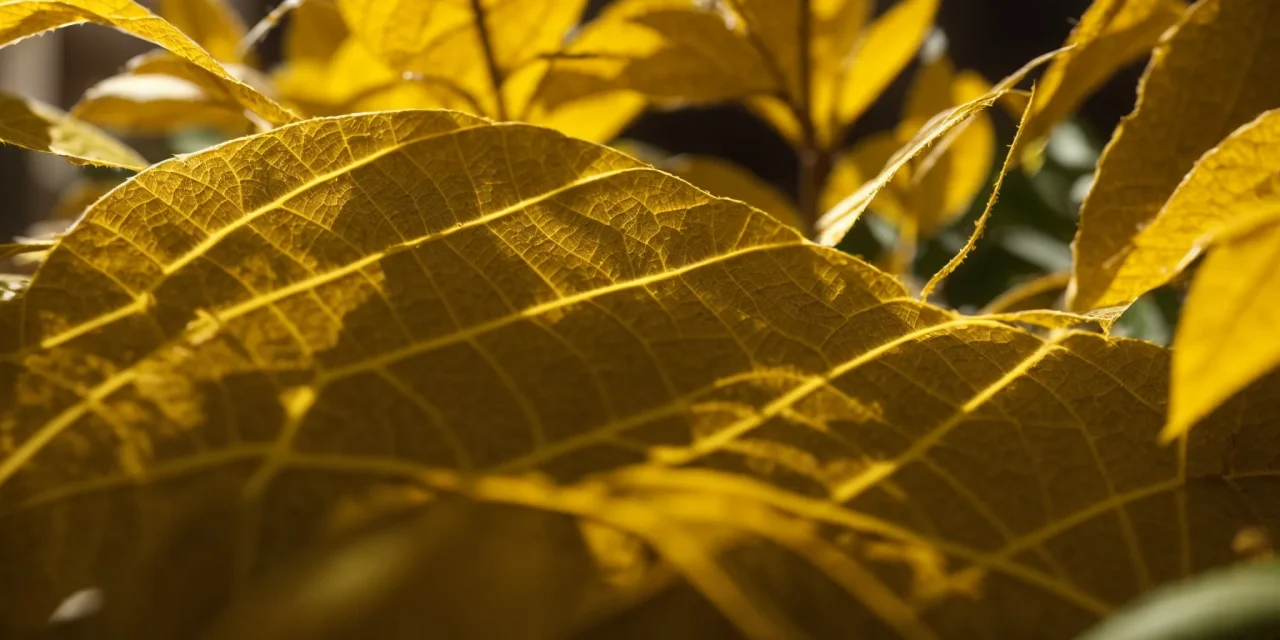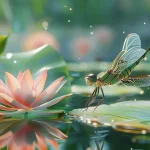Table of Contents
ToggleIndoor Plant Pests: Prevention and Solutions
Have you ever spotted an unwelcome guest lurking on the leaf of your favorite indoor plant, or perhaps noticed your robust tree withering, perplexed by an unseen adversary? Your home could be facing the silent onslaught of common indoor plant pests—a challenge not only frustrating but also detrimental to your green companions. This article offers practical solutions and preventative measures, focusing on identifying pests early, natural and chemical pest control methods, and enduring strategies to safeguard your plants against future invasions. Discover how maintaining optimal soil moisture and plant health, combined with vigilant observation, can create an inhospitable environment for pests. Engaging with this content provides you with the necessary tools to protect your indoor greenery, ensuring they thrive free from the destructive grip of aphids, mealybugs, and spider mites.
How to Identify Common Indoor Plant Pests in Your Home

As a horticulture enthusiast, I understand that the lush leaves and thriving growth of houseplants from the tropics can be marred by pest invasions. Identifying these unwelcome guests begins with examining plants for physical damage on leaves, stems, and roots. I recommend regular inspections to spot tiny insects before they cause significant harm. Equally critical is recognizing pest signs such as sticky residue or webbing, which can signal an infestation. These indicators will be our focus, offering practical management solutions to protect your indoor greenery.
Look for Physical Damage on Leaves, Stems, and Roots
In my experience, the first step in safeguarding your home garden is scrutinizing the physiology of your plants to spot any irregular damage. This means closely inspecting favorites like bamboo and ficus lyrata for blemishes or unusual marks on their leaves, stems, and roots. Telltale signs such as holes, chewed edges, or a general decline in the plant’s health can reveal the presence of pests, prompting swift action to replicate their natural environment and deter further damage.
Acting quickly to identify physical damage is crucial since many plant pests tend to blend in with their surroundings, making them challenging to detect. Look for discoloration or wilting that might betray an infestation’s impact on a plant’s vitality. Often, these issues can stem from small invaders such as aphids or spider mites, which, if left unchecked, threaten the wellbeing of the entire garden. Early intervention preserves the harmony of your indoor ecosystem and is a cornerstone of responsible plant care.
Detect Tiny Insects With Regular Plant Inspections
In my routine inspections, I’ve noted how crucial it is to meticulously examine plants like ‘chlorophytum comosum’, commonly known as the spider plant, and various fern species. These plants, with their verdant fronds and arching leaves, often create the perfect hiding spots for pests. Sunlight, a key component of a plant’s health, can also be utilized as an inspection aid; as I’ve positioned plants in well-lit areas during examinations, I’ve better distinguished the subtle presence of pests against the illuminated foliage, thereby ensuring my ‘monstera deliciosa’ and other indoor favorites remain healthy and vibrant.
Observing my indoor garden closely, I’ve learned that the natural resilience of plants often obscures the earliest signs of infestation. For instance, a ‘fern’ might appear deceptively robust while harboring a microcosm of destructive insects in its lush greenery. My keen eye for detail, reinforced by a deep understanding of plant health, has empowered me to detect these tiny insects before they proliferate, saving many a plant from the brink of demise. This level of vigilance is fundamental for preserving the entirety of a cherished indoor garden.
Recognize Pest Signs Like Sticky Residue or Webbing
In my practice of maintaining healthy indoor plants, I’ve found that sticky residues on leaves can point to a sap-feeding insect, such as aphids, assaulting your succulent plants or dracaena. This sticky substance, known as honeydew, is a clear indicator of pest activity. Similarly, webbing, particularly around the nodes and undersides of philodendron or hedera helix (common ivy) leaves, often signals a spider mite invasion. Both of these symptoms can be exacerbated by high humidity, which provides an ideal environment for pests to thrive.
I’ve witnessed firsthand how these signs can easily be mistaken for dust or overwatering. However, upon closer inspection, I’ve confirmed time and again the presence of pests creating these issues. Detecting these subtle but concerning warning signs is critical for implementing effective pest management strategies. Acting swiftly not only prevents damage to the affected plant but also safeguards surrounding vegetation from similar fates. Such attentiveness is essential to maintaining the health and aesthetic of an indoor garden.
Identification is the first step in the battle against indoor plant pests. Let’s now arm ourselves with strategies to foster healthy plants, keeping unwelcome guests at bay.
Ways to Maintain Healthy Plants and Prevent Pest Infestations
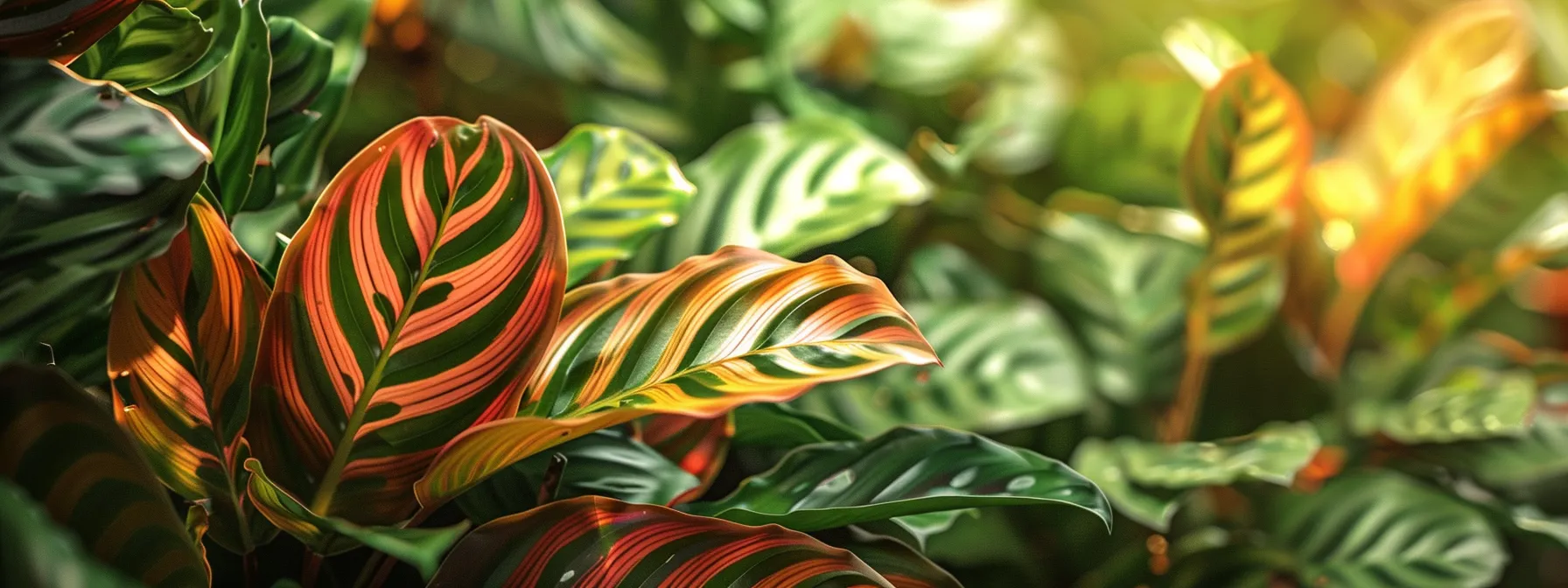
As I’ve nurtured various indoor plants, including the vibrant calathea and robust ficus, I’ve realized that prevention is as crucial as intervention in managing pests. Through providing adequate water and nutrients, I bolster my plants’ resilience against common pests. Ensuring proper air circulation has proven vital for flowering plants and epipremnum aureum, often called pothos, to maintain productivity and vigor. Additionally, I make it a priority to clean and prune plants regularly, discarding dead matter that could harbor pests. The strategies we are about to delve into not only fortify my lush indoor garden but also optimize the conditions for a pest-free environment.
Provide Adequate Water and Nutrients to Strengthen Plants
Ensuring that each of my plants, from the drought-tolerant cactus to the humidity-loving spathiphyllum, receives the correct balance of water and nutrients is a foundation of my pest management strategy. Over or under-watering can stress plants, making them vulnerable to pests, so I adhere strictly to each species’ requirements. For instance, I provide my monstera with regular, deep watering to mimic its native tropical environment, thereby enhancing its pest resistance.
Similarly, the nutritional needs must be met to keep plants like peperomia and evergreen varieties robust and less susceptible to infestations. I apply a balanced fertilizer appropriate for the development stage of the plant, which encourages healthy growth and fortified defenses against common indoor plant pests. It’s been gratifying to see how a well-nourished plant can withstand the onslaught of pests much better than one struggling with nutrient deficiencies.
Ensure Proper Air Circulation Around Indoor Plants
In my care for plants such as the popular pothos, with its striking variegation, I’ve learned that proper air circulation is paramount in preventing pest issues. This airflow reduces the humidity on leaf surfaces, hindering the spider mites’ ability to establish a stronghold on the foliage. By strategically placing my zamioculcas and aloe vera to ensure a gentle flow of air, I’ve successfully minimized infestations and maintained their health and vigor.
Additionally, positioning plants to avoid overcrowding not only showcases their beauty but also promotes a healthier environment less conducive to pests. I’ve seen a noticeable difference when I give my plants, especially those with dense foliage like the pothos and spider plants, sufficient space. Air can circulate freely, reducing the risk of stagnant, moist conditions that pests favor, and this simple step is critical in safeguarding my greenhouse sanctuary.
Clean and Prune Plants Regularly to Remove Dead Matter
Regular cleaning and pruning are practices I hold in high regard for maintaining the aesthetic appeal and overall health of my indoor plants, notably the resilient sansevieria. This process effectively removes any dead or decaying leaves and stems, which could serve as an invitation to pests and contribute to issues like air pollution within the home. By keeping these plants in pristine condition, I ensure that not only is the garden space healthy, but it also contributes to better blood pressure levels and overall well-being through its air-purifying capabilities, seamlessly integrating with my interior design.
Careful pruning and disposal of dead material, in my experience, are not only about cleanliness but also about prevention. This attention to detail creates a less hospitable environment for pests and eliminates hiding spots for potential infestations. Through my proactive approach, I’ve observed a noticeable reduction in pest-related problems, allowing the plants, like the aforementioned sansevieria, to better contribute to a clean air space, undeterred by the stress and damage that pests can inflict. Simplifying maintenance practices as such is directly aligned with my aim for a harmonious interior design that nurtures both plant health and personal tranquility.
Now, as our plants bask in good health, let’s turn our focus to unseen threats. The following strategies will tap into nature’s own defenses, keeping indoor pests at bay without compromising our green sanctuary’s integrity.
Natural and Organic Methods for Controlling Indoor Pests

Turning our attention to natural and organic methods, I explore practical solutions to manage pests that target indoor plants. Through my research, I’ve found Neem Oil to be an effective natural insecticide, particularly for species like aglaonema and dracaena trifasciata. Implementing homemade soap sprays can efficiently combat soft-bodied pests, while the introduction of beneficial predators becomes a strategic move to keep pest populations under control. With the right application, even the ambient light from a basic grow light can contribute to warding off pests. These upcoming topics not only promise a pest-free environment but also champion sustainability and plant health.
Apply Neem Oil as a Natural Insecticide Solution
From my experience, Neem oil stands as a highly effective natural insecticide that protects indoor plants against a broad spectrum of pests. When applied to my aloe plants, I found Neem oil not only alleviates stress caused by pest infestations but also helps prevent root rot—an added benefit for succulents like crassula ovata. The key is consistent application, diluting the oil as recommended to avoid overwhelming the plants, particularly for tender foliage species.
Focusing on attentive care, I’ve seen Neem oil work wonders in preventing pests from taking hold, especially on plants with intricate vine structures. Its systemic action deters pests from establishing a presence, ensuring the robust growth of my greens. By incorporating Neem oil into my routine plant care, I’ve effectively created a strong defense barrier around my indoor garden without resorting to harsh synthetic chemicals.
Use Homemade Soap Sprays to Eliminate Soft-Bodied Pests
In my pursuit of a naturally vibrant indoor garden, I’ve utilized homemade soap sprays as a potent weapon against soft-bodied pests, a method particularly effective for delicate plants such as hoya and tradescantia. The soap breaks down the pests’ protective layer, causing dehydration and ultimately their demise. For the dracaena sanderiana, whose striped leaves add a splash of color to any room, a gentle soap spray application not only preserves its striking appearance but also contributes to maintaining the plant’s health and in turn, could aid in creating a serene environment that positively influences heart rate and stress levels.
Melding simplicity with efficacy, I create my soap spray by mixing a mild, environmentally friendly dish soap with water, emphasizing care to prevent harming my plants. As I treat vulnerable specimens with this solution, I am attentive to avoid excessive use, which can lead to leaf damage. It is this meticulous approach to plant health that empowers me to tackle pests while preserving the lush textures and rich colors that make my living space a true sanctuary for both myself and my cherished greens.
Introduce Beneficial Predators to Control Pest Populations
In my pursuit of a balanced ecosystem within my indoor garden, the introduction of beneficial predators such as ladybugs has shown to be an excellent method for controlling pest populations. These admirable, beetle-like allies voraciously feed on aphids that can otherwise wreak havoc on tender vegetable seedlings or the lush leaves of tall strelitzia plants. By including these natural helpers, I’ve maintained pest levels without the need for chemical interventions, affirming the dynamic equilibrium of my indoor plant collection.
Moreover, deploying predatory mites has proven to be a subtle yet impactful tactic in managing pests, particularly the thrips and mealybugs that might attack a thriving begonia. My long-term observation has confirmed that these mite allies patrol the foliage, preemptively striking against infestations and limiting the need for more aggressive measures. It’s a responsible approach that conserves the plant’s health while endorsing the principles of organic cultivation, offering a sound counterbalance to the challenges posed by indoor plant pests.
While we’ve armed ourselves with nature’s own defenses against indoor pests, sometimes the invaders persist. Now, we prepare to step into the realm of chemical treatments, with safety as our steadfast companion.
Safely Using Chemical Treatments to Eliminate Plant Pests

When natural methods fall short, I turn to chemical treatments as a last resort to safeguard the health of plants like ficus elastica, a common room and bedroom favourite. It is critical to select pesticides tailored specifically for certain pest issues, ensuring they do not compromise indoor air quality or the surrounding climate. Adherence to safety guidelines is paramount when applying these products, as it minimizes risks to other inhabitants. Post-treatment, monitoring is key to determining the success of the intervention. In the following sections, I will detail the judicious use of chemicals for pest elimination, emphasizing their strategic application for maintaining robust plants.
Choose Appropriate Pesticides for Specific Pest Issues
In my management of an indoor garden that includes plants like the delicate anthurium, I have learned the importance of targeting specific pests with appropriate pesticides. When I notice that the usual preventive measures fail and the potting soil becomes a breeding ground for pests, choosing the right chemical intervention is critical. For those with plants such as beaucarnea recurvata, also known as the ponytail palm, finding a pesticide that targets the specific insects without damaging the plant or affecting cognition from unwanted fumes is indispensable for both plant health and the safety of the household.
Integrated pest management has taught me that the chamaedorea elegans, or the parlor palm, often suffers from scale insects that resist general treatments. In these instances, selective pesticides, applied according to the manufacturer’s guidelines and with adequate personal protection, can eliminate the invaders effectively. This conscientious approach not only tackles the immediate issue but also maintains the integrity of the indoor ecosystem, minimizing the risk of recurring infestations and safeguarding the air quality that contributes to our overall well-being.
Follow Safety Guidelines When Applying Chemical Products
In my cultivation of sensitive houseplants like alocasia and dieffenbachia, I’ve become acutely aware of how critical it is to adhere to safety guidelines when applying chemical products. Given their potential impact, I take great caution to ensure that the environment remains safe and conducive to both human and plant health. I carefully read labels, apply chemicals in well-ventilated areas or use protective gear if required, and store products away from living spaces to prevent any adverse psychological or physical effects on my household.
I recall once treating a hanging basket with an aspidistra for mites; I meticulously followed the safety precautions outlined on the pesticide. This approach not only successfully addressed the pest issue but also avoided harming the lush green foliage that contributes to the serene atmosphere of my home. My experience confirms the importance of using chemicals responsibly, prioritizing the health of the plants and the well-being of the occupants in our shared environment.
Monitor Plants After Treatment for Effectiveness
After administering the chosen chemical treatment, I habitually monitor the progress to ensure the pests plaguing my Hoya carnosa and other susceptible plants have been overcome. The presence of disease or lingering pests could throttle the development of a new seed or cutting, not to mention elevate anxiety about the possibility of a recurring infestation. In cases involving my Dracaena fragrans, this vigilance allowed me to swiftly identify signs of pest resistance to the treatment, prompting me to adjust my approach for better plant health outcomes.
Consequently, the mindful observation of treated plants, such as noting any adverse reactions or signs of stress, enables me to evaluate the effectiveness of the pest control measures. Being alert to these changes is crucial; for example, I’ve found that certain treatments may initially seem effective on the thriving foliage of a Dracaena fragrans, only to require subsequent applications to completely eradicate the issue. Throughout this process, I maintain a careful record of both the treatments applied and the plant’s response, which serves as an essential tool for achieving long-term success in indoor plant care.
With pests vanquished, our plants can thrive. Yet the war is not over; let’s prepare our defenses for what lies ahead.
Strategies for Preventing Future Pest Problems Indoors
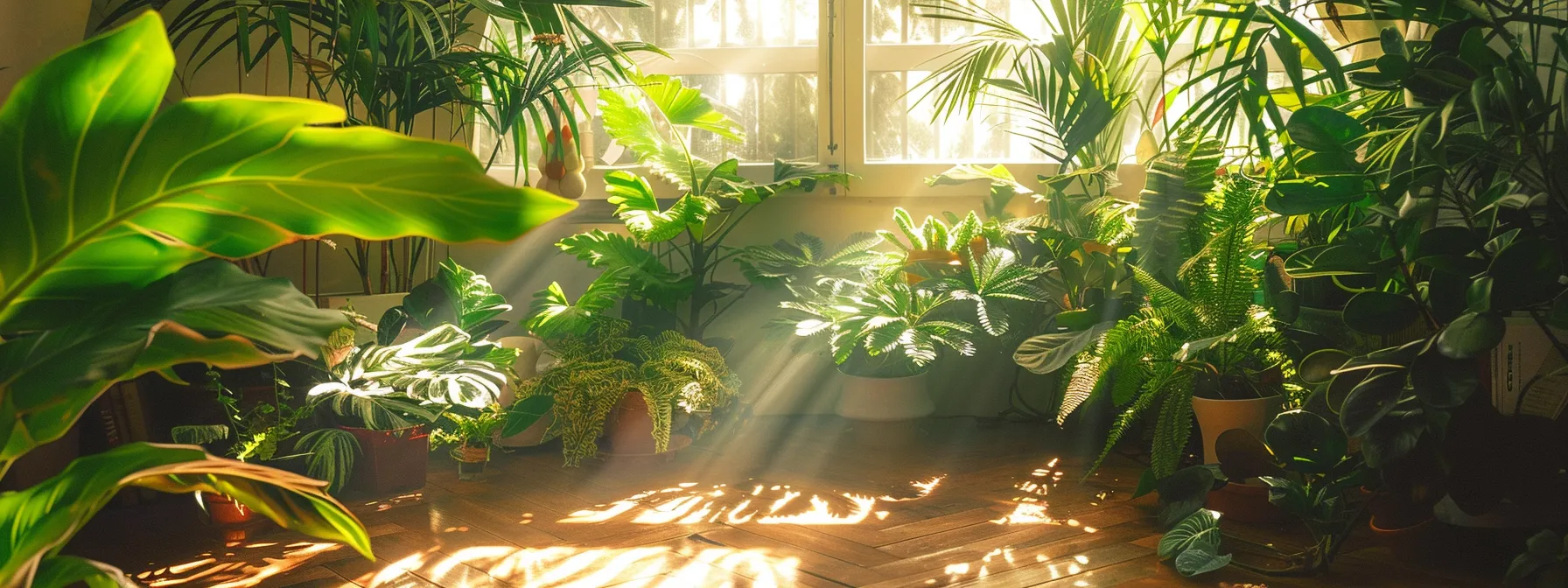
Preventing the resurgence of pests within my indoor garden encompasses more than just reaction to infestations; it understands the need for a proactive stance. Exploring strategies such as isolating new plants, like the delicate ‘ficus benjamina’ or the striking zebra plant, ensures they’re free from pests before joining my collection. I also prioritize maintaining a clean environment, conducive to plant health, whether it’s in a sunlit corner or a humid bathroom. Knowledge is power; thus, educating myself about common indoor plant pests forms the base of effective prevention. Each of these steps, from using the right fertilizer to upholding nature’s balance, plays a pivotal role in my effort to maintain a thriving and pest-free indoor garden.
Isolate New Plants Before Adding to Your Collection
My practice of isolating new additions such as the elegant howea forsteriana or versatile epipremnum has been crucial in preempting pest invasions. This quarantine period allows for careful observation and any necessary interventions like pruning to remove potentially infested foliage or treating early signs of root rot, ensuring the newcomers don’t introduce pollutants or pests to the established indoor collection.
By diligently separating new plants from my existing collection, I’ve found a marked decrease in pest-related stressors. It’s a period where I can address any hidden issues away from my healthy specimens, avoiding cross-contamination and giving each new epipremnum or other species the best start in its new home without the risk of spreading common indoor plant pests.
Keep the Growing Environment Clean and Pest-Free
Maintaining a hygienic environment for my indoor plants, including the robust cast iron plant and the delicate hedera, has been fundamental in preventing pest invasion. Regularly cleaning the area around the plants and using them as organic air purifiers removes dust and potential pest attractants, ensuring that the space remains conducive to their growth and minimizes the risk of pest problems. My attention to cleanliness around these perennials goes hand in hand with their ability to clear the air, benefiting both plant health and my own living space.
Part of my practice to keep a pet-friendly and pest-free environment is to vigilantly remove any decaying plant material that might serve as a breeding ground for pests. I’ve seen how a neglected leaf or a spill can quickly invite unwanted guests, so I advocate frequent sanitation around my indoor garden. This commitment extends to ensuring air purifier units are optimized for performance, further bolstering the defense against airborne pests and contributing to a thriving sanctuary for both my perennial favorites and my cherished pets.
Educate Yourself About Common Indoor Plant Pests
My dedication to plant health motivates me to continuously expand my knowledge of common indoor plant pests, particularly those affecting delicate species like orchids, which often fall prey to sap-sucking insects. Understanding the specific threats that pests pose to different plants, such as the gnawing damage spider mites inflict on the leaves of a ‘swiss cheese’ plant, equips me with the tools I need for early detection and effective intervention. This education serves not just as a defensive strategy, but as a proactive measure to ensure the longevity of vibrant indoor flora like ‘pachira aquatica’.
In my role as a careful plant caretaker, I’ve learned that bolstering my plant care arsenal with the right knowledge works as an indispensable tool against pest invasions. Familiarizing myself with the iron-clad defenses needed to protect my green treasures, I’ve crafted a set of best practices tailored to each species’ vulnerabilities. As a result, I’m able to maintain my indoor garden in thriving condition, preventing pests from compromising the delicate balance necessary for the well-being of my beloved plant collection.
Our homes are now fortified against unwanted invaders, setting the stage for verdant serenity. Yet aphids, mealybugs, and spider mites, the notorious trio, present a unique battle in our garden’s ongoing saga.
Effectively Dealing With Aphids, Mealybugs, and Spider Mites
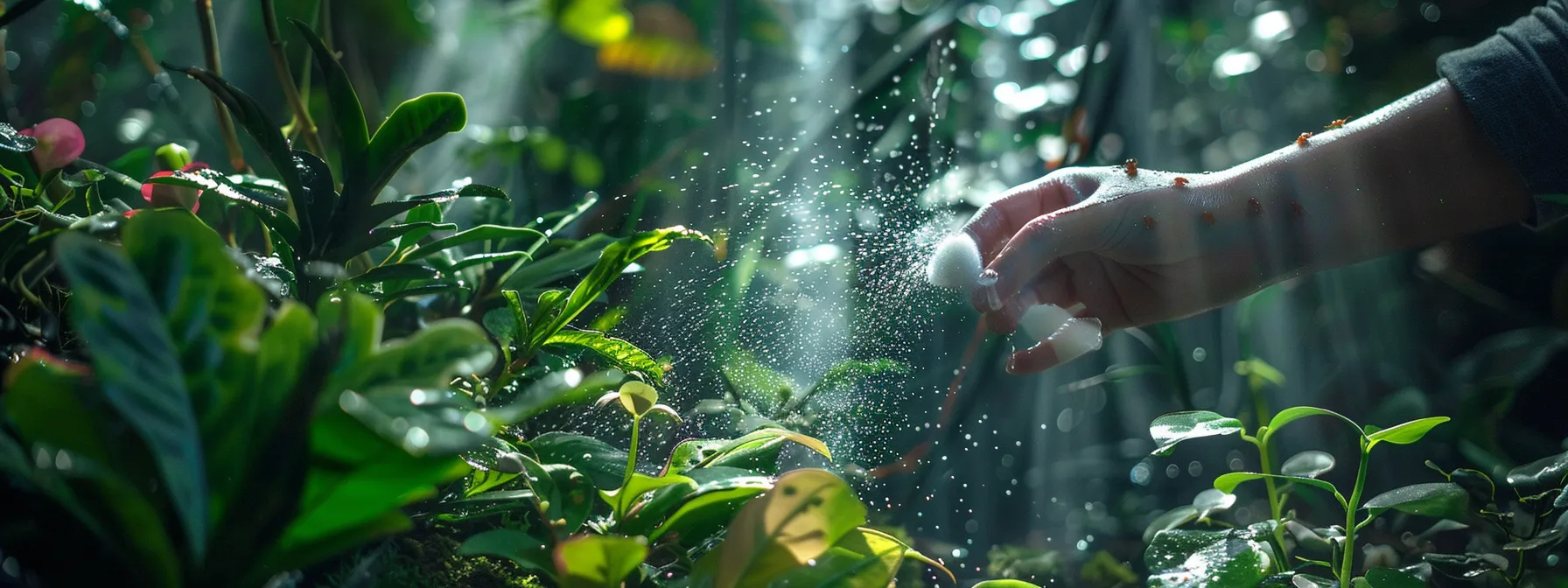
In my ongoing battle against common indoor plant pests, I’ve developed a trifecta of practical solutions to tackle aphids, mealybugs, and spider mites, known culprits in our leafy havens. For the delicate maranta leuconeura and fruitful plants from Asia, manual aphid removal or the use of safe organic sprays offers accessible control methods. A simple alcohol-soaked cotton swab efficiently combats mealybugs without undue pressure on the plant. And, by augmenting humidity levels, we can create an unfavorable climate for spider mites, maintaining the health of our indoor ecosystems. These methods, rooted in experience, underscore the importance of targeted strategies in plant care.
Remove Aphids Manually or With Safe Organic Sprays
In my practice of plant care, manual removal of aphids has proven effective for smaller infestations, particularly in maintaining the splendid foliage of ‘Aspidistra elatior’, commonly known as the cast iron plant. By gently wiping the leaves with a soft, damp cloth, I remove the aphids, which are drawn to the plant’s carbon dioxide emissions during photosynthesis. This targeted approach spares the asparagus ferns and other neighboring plants in the lawn from harmful overspray, safeguarding their collective contribution to mental health through their calming presence.
For a more potent remedy, I apply organic sprays that are safe for indoor use, ensuring that my home remains a sanctuary for both its human and botanical inhabitants. These sprays, derived from natural sources, effectively disrupt the aphids’ life cycle without releasing harmful chemicals into my living space, aligning with my commitment to an environmentally conscious approach to plant care. The resulting peace of mind, knowing that I have fortified my green allies in the fight against pests, further underscores the benefits these techniques provide to both plant and personal well-being.
Treat Mealybugs With Alcohol-Soaked Cotton Swabs
In dealing with a mealybug infestation, I’ve often relied on a simple yet effective approach: using alcohol-soaked cotton swabs to target these pests directly. As mealybugs can compromise both the photosynthetic efficiency and the oxygen production of indoor plants like the resilient Boston fern or the delicate schlumbergera, this method allows for specific removal without affecting the plant’s overall health.
My experience has shown that a careful dabbing of the affected areas, typically where dust-like mealybugs congregate, results in swift pest control while safeguarding the plant’s vitality. This tactic not only preserves the aesthetics of the greenery but also ensures the continued purification of air within my living space, enhancing the well-being of both my plants and home atmosphere.
Control Spider Mites by Increasing Humidity Levels
In my years of cultivating lush indoor gardens, I’ve discovered that raising humidity levels can be a safeguard against spider mites, particularly in the kitchen where these pests may invade herb pots or a cherished kalanchoe. Adjusting the humidity can be as simple as using a humidifier or misting the plants; these actions create an environment less hospitable for mites, promoting the health and growth of your plants.
When I was nurturing a delicate scindapsus pictus, spider mites posed a genuine threat, especially after transplanting, which often stresses plants and makes them more vulnerable. By intentionally boosting the humidity around the plant, not only did I enhance the lush quality of its silver-flecked leaves, but I also gifted it with a defense mechanism against the persistent spider mites, ensuring the enduring beauty and vigor of this elegant vine.
Frequently Asked Questions
How can I spot signs of indoor plant pests early?
Detecting early signs of indoor plant pests involves examining for irregularities such as discolored leaves, sticky residue, or visible insects on the underside of leaves, ensuring timely identification and treatment.
What daily practices help prevent indoor plant pest infestations?
Regular monitoring, proper watering, and maintaining cleanliness are critical daily practices for preventing indoor plant pest infestations.
Are there effective organic remedies for indoor plant pests?
Absolutely, organic remedies such as neem oil, insecticidal soap, and diatomaceous earth are efficacious for combatting indoor plant pests like spider mites, aphids, and mealybugs.
When should I consider chemical treatments for plant pests?
Chemical treatments for plant pests should be a last resort, after cultural, physical, and biological control methods have been tried and found ineffective.
How can I tackle aphids, mealybugs, and spider mites on houseplants?
For aphids, mealybugs, and spider mites on houseplants, mist with soapy water, introduce natural predators, or apply neem oil for an effective, non-toxic solution.

